3rd CE Vadakkunnathan Temple Built by Parashurama
The Vadakkunnathan Temple is a Hindu temple dedicated to Shiva located in the city of Thrissur, Kerala, India. The temple is one of the oldest and most important temples in Kerala, and is considered to be one of the 108 Shiva temples built by Parashurama.
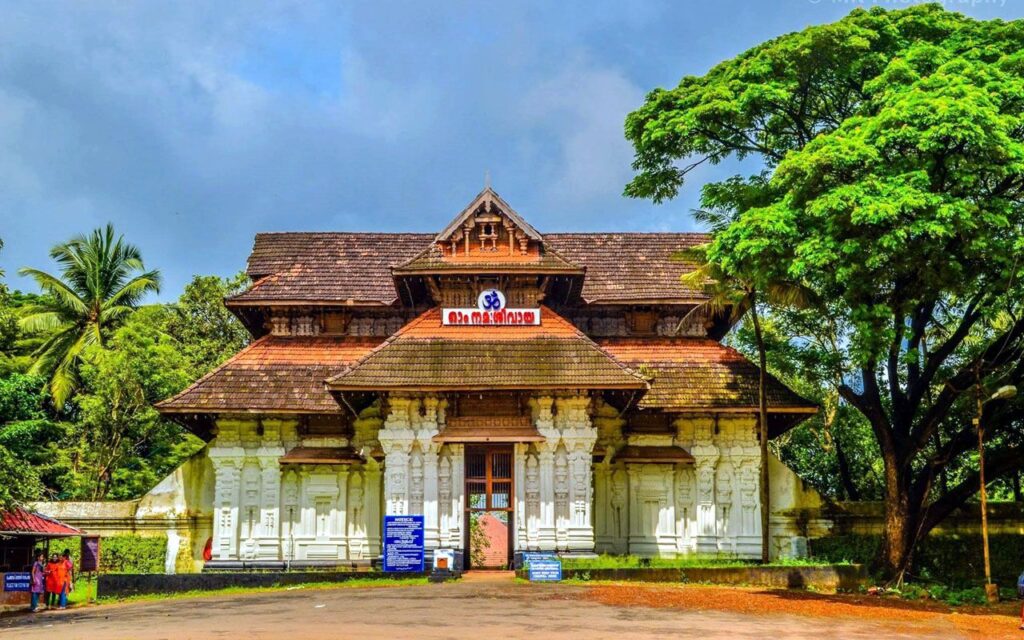
Contents
- 1 Vadakkunnathan Temple History:
- 2 Legend of Vadakkunnathan Temple:
- 3 Significance of Vadakkunnathan Temple:
- 4 Myths of Vadakkunnathan Temple:
- 5 Vadakkunnathan Temple Architecture:
- 6 Vadakkunnathan Temple Timing and Rituals:
- 7 Places to visit near Vadakkunnathan Temple:
- 8 FAQ:
- 9 How to reach Vadakkunnathan Temple:
- 10 Google Maps:
Vadakkunnathan Temple History:
The temple is believed to have been built in the 3rd century BCE, and has been renovated and expanded several times over the centuries. The temple complex is enclosed by a massive wall, and has four gopurams (gateways) on each side. The main gopuram, the eastern gopuram, is 35 meters tall.
The temple has three sanctums, one each for Shiva, Vishnu, and Sankaranarayana (a combined form of Shiva and Vishnu). The sanctum of Shiva is the largest and most important, and houses a lingam (aniconic representation of Shiva) that is said to be swayambhu (self-manifested).
The temple is a major pilgrimage site, and is visited by millions of people every year. The temple is also the site of the Thrissur Pooram, one of the largest and most colorful festivals in Kerala.
Here is a timeline of some of the important events in the history of the Vadakkunnathan Temple:
- 3rd century BCE: Temple is believed to have been built by Parashurama.
- 8th century CE: Temple is renovated and expanded by the Chera king Kulasekhara Alvar.
- 13th century CE: Temple is damaged by invading Muslim armies.
- 16th century CE: Temple is rebuilt by the Zamorin of Calicut.
- 18th century CE: Temple is damaged by a fire.
- 19th century CE: Temple is renovated by the British.
- 20th century CE: Temple is declared a national monument by the Government of India.
Read More>> Sabarimala Temple: Abode of Lord Ayyappa
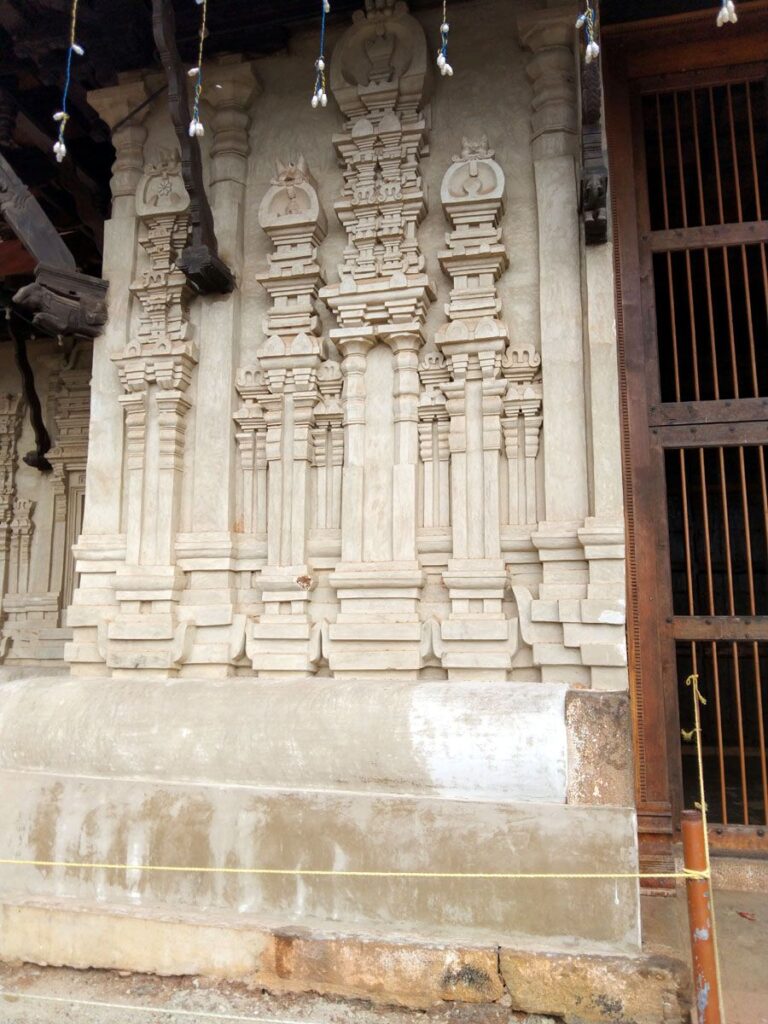
Legend of Vadakkunnathan Temple:
According to one legend, Parashurama requested the Lord of oceans Varuna to bring forth a new piece of land from the waters. Varuna complied and the land created became Kerala. Parashurama now wanted to consecrate this new land.
He traveled to the Himalayas and brought back a lingam of Shiva. He then installed the lingam in a temple at the spot where the city of Thrissur now stands. The temple was named Vadakkunnathan Temple, after the local name for Shiva.
Another legend tells the story of how Parashurama came to be in possession of the lingam. According to this legend, Parashurama had killed a demon named Kartavirya Arjuna. The demon’s father, Sahasrarjuna, was furious and he vowed to avenge his son’s death.
Sahasrarjuna attacked Parashurama with a powerful army. Parashurama was defeated and he fled to the Himalayas. In the Himalayas, Parashurama met Shiva and he begged the god for protection. Shiva gave Parashurama the lingam and he told him to install it in a temple.
The Vadakkunnathan Temple has been a major pilgrimage site for centuries. It is one of the most important temples in Kerala and it is a popular destination for both Hindus and non-Hindus alike.
Read More>> Treta Yuga Vaikom Mahadeva Temple
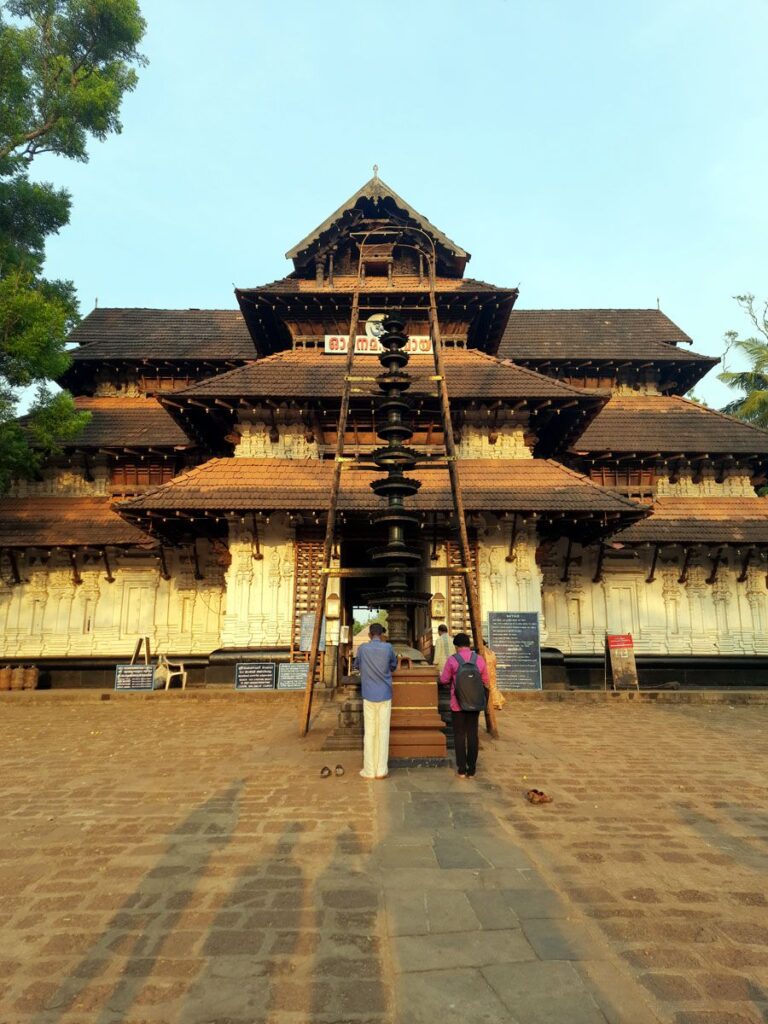
Significance of Vadakkunnathan Temple:
The Vadakkunnathan Temple is a significant religious and cultural site for Hindus in Kerala. The temple is also a popular tourist destination, and is known for its beautiful architecture and intricate carvings.
Here are some of the significance of the Vadakkunnathan Temple:
- Religious significance: The Vadakkunnathan Temple is one of the most important Shiva temples in Kerala. The temple is believed to have been built by Parashurama, the sixth avatar of Vishnu. The temple is also the site of the Thrissur Pooram festival, one of the largest and most colorful festivals in Kerala.
- Cultural significance: The Vadakkunnathan Temple is a significant cultural site for Hindus in Kerala. The temple is a symbol of Kerala’s rich cultural heritage. The temple is also a popular tourist destination, and is known for its beautiful architecture and intricate carvings.
- Historical significance: The Vadakkunnathan Temple is a historically significant site. The temple is believed to have been built in the 7th century AD. The temple has been witness to many important events in Kerala’s history.
Read More>> Thiruvairanikulam Mahadeva Temple
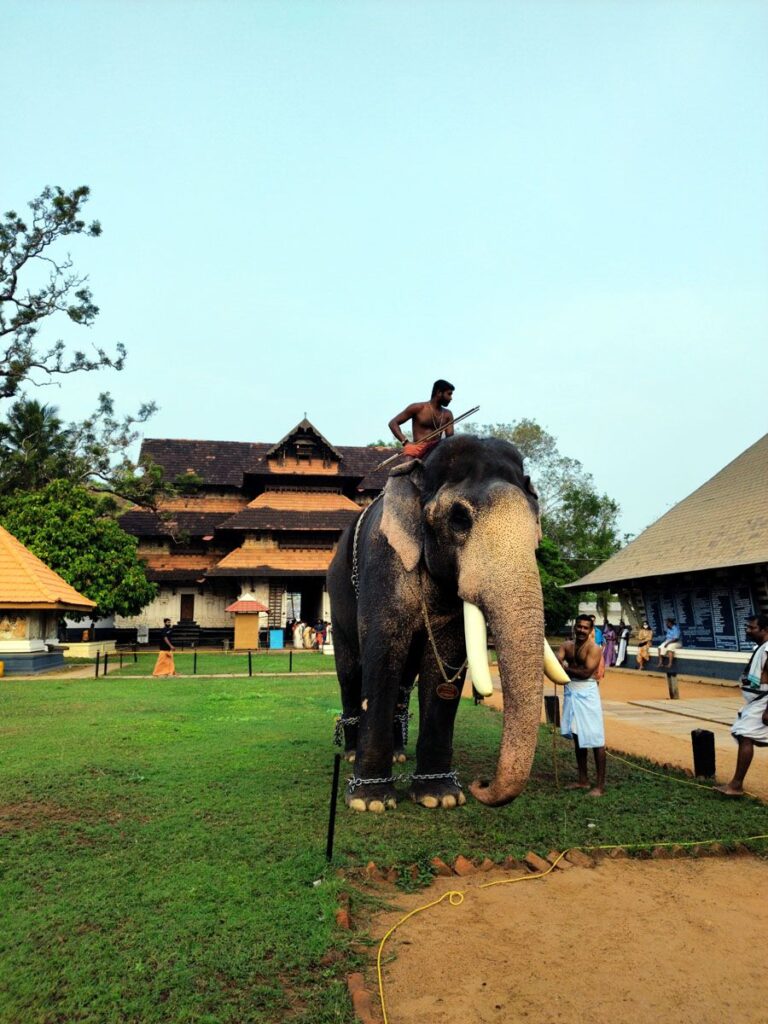
Myths of Vadakkunnathan Temple:
There are many myths and legends associated with the Vadakkunnathan Temple. One of the most popular myths is that the temple was built on the spot where Parasurama killed the demon Kartavirya Arjuna. According to the legend, Parasurama was granted a boon by Shiva that he would be able to kill any enemy who did not bow down to him. Kartavirya Arjuna, the king of the Haihayas, was a powerful warrior who refused to bow down to Parasurama. Parasurama then killed Kartavirya Arjuna and his army.
Another myth associated with the Vadakkunnathan Temple is that the lingam in the temple was installed by Shiva himself. According to the legend, Shiva was pleased with the devotion of Parasurama and appeared to him in person. Shiva then installed the lingam in the temple and promised Parasurama that he would always be present in the temple.
The Vadakkunnathan Temple is also associated with the legend of Adi Shankaracharya. According to the legend, Adi Shankaracharya was born in Thrissur and was a devotee of Lord Shiva. He is said to have visited the Vadakkunnathan Temple many times and to have received divine knowledge from Shiva.
Read More>> Mahakaleshwar Jyotirlinga: Powerful Mahakal Temple in Ujjain
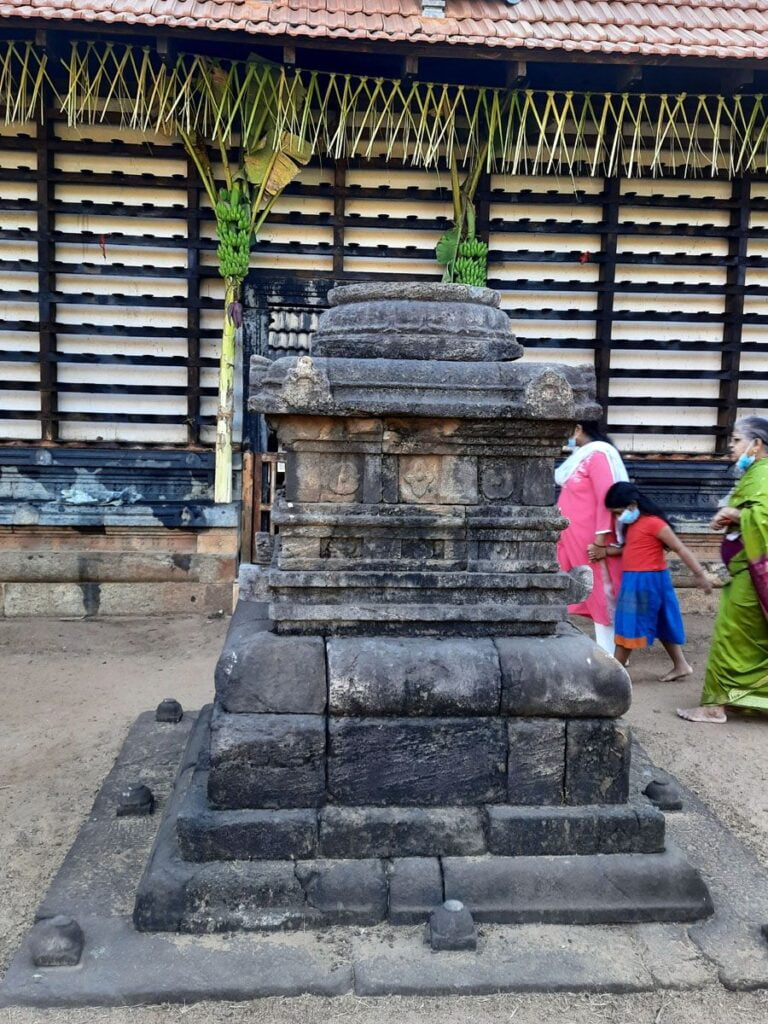
Vadakkunnathan Temple Architecture:
Gopuram of Vadakkunnathan Temple The temple is situated on an elevated hillock in the center of Thrissur City and is surrounded by a stone wall enclosing an area of nearly 9 acres. Inside this fortification, there are four gopurams (gateway towers) facing four cardinal directions. Between the inner temple and the outer walls, there is a spacious compound, the entrance to which is through gopurams. Of these, the gopurams on the south and north are not open to the public. The public enter either through the east or west gopuram. The inner temple is separated from the outer temple by a broad circular granite wall enclosing a broad corridor called Chuttambalam.
The Chuttambalam is lined with a series of shrines dedicated to various deities, including Vishnu, Ganesha, and Parvati. The main shrine of the temple is located in the center of the Chuttambalam and is dedicated to Shiva. The sanctum sanctorum of the shrine houses a large lingam (aniconic representation of Shiva) made of black granite.
The temple is built in the traditional Kerala style of architecture, which is characterized by its use of wood and stone. The roofs of the temple are covered with copper tiles and the walls are decorated with intricate carvings. The temple is also home to a number of murals, which depict scenes from Hindu mythology.
Read More>> Sacred Kashi Vishwanath Temple: 11th Jyotirling of Liberation
Vadakkunnathan Temple Timing and Rituals:
The temple opens at 4:00 AM in the morning and closes at 11:00 AM. It opens again in the evening at 5:00 PM and closes at 8:30 PM.
Pooja Timings
- Neyyattam: 4:15 AM
- Usha Pooja: 6:00 AM – 6:30 AM
- Ucha Pooja: 9:00 AM – 9:45 AM
- Athazha Pooja: 7:00 PM – 7:45 PM
- Deeparadhana: 7:45 PM
Rituals
The following rituals are performed at the Vadakkunnathan Temple:
- Neyyattam: This is the first ritual of the day, and it involves offering ghee to the deity.
- Usha Pooja: This is the morning pooja, and it involves offering prayers and flowers to the deity.
- Ucha Pooja: This is the noon pooja, and it involves offering food to the deity.
- Athazha Pooja: This is the evening pooja, and it involves offering prayers and lamps to the deity.
- Deeparadhana: This is the final ritual of the day, and it involves waving lamps in front of the deity.
Festivals
The following festivals are celebrated at the Vadakkunnathan Temple:
- Thrissur Pooram: This is the most important festival of the temple, and it is celebrated in April or May.
- Shivaratri: This festival is celebrated in February or March.
- Anayoottu: This festival is celebrated in July.
Read More>> Shree Ganesh Temple Ganpatipule : Where Faith Meets Nature
Places to visit near Vadakkunnathan Temple:
- Paramekkavu Bhagavathy Temple: Located adjacent to Vadakkunnathan Temple, this temple is one of the major participants in the Thrissur Pooram festival.
- Thiruvambadi Sri Krishna Temple: Another prominent temple in Thrissur, it is also a key participant in the Thrissur Pooram festival.
- Shakthan Thampuran Palace: A historical palace located in the heart of Thrissur, showcasing Kerala’s traditional architecture and artifacts.
- Thrissur Zoo and Museum: A popular attraction for families, it features a zoo with a variety of animals and a museum with a collection of natural history exhibits.
- Peechi Dam: Approximately 20 km from Thrissur, Peechi Dam offers a picturesque setting with boating facilities and a wildlife sanctuary.
- Athirappilly Waterfalls: Located about 70 km from Thrissur, Athirappilly is one of the largest waterfalls in Kerala, surrounded by lush greenery and a popular tourist destination.
- Vilangan Hills: A serene hill station located around 5 km from Thrissur, offering beautiful views of the surrounding landscapes.
- Kerala Kalamandalam: The renowned center for learning Indian performing arts, especially Kathakali, Mohiniyattam, and other traditional art forms.
- Chavakkad Beach: Approximately 30 km from Thrissur, Chavakkad Beach is a serene spot to relax and enjoy the coastal beauty.
- Vazhachal Forest Gardens: Situated near Athirappilly Falls, these gardens provide a tranquil setting surrounded by dense forests.
FAQ:
- Where is Vadakkunnathan Temple located?
- Vadakkunnathan Temple is situated in Thrissur district, in the state of Kerala, India.
- What is the significance of Vadakkunnathan Temple?
- The temple is dedicated to Lord Shiva and is considered one of the oldest and most important Shiva temples in Kerala. It holds great religious and cultural significance for the people of Kerala.
- When was Vadakkunnathan Temple built?
- The exact date of construction is not well-documented, but it is believed to be an ancient temple with historical roots. The present structure is said to have been constructed in the 8th to 14th centuries.
- What is the architectural style of Vadakkunnathan Temple?
- The temple follows the traditional Kerala style of architecture known as the Dravidian style. The temple complex includes a circular sanctum sanctorum (srikovil) and a square-shaped inner courtyard.
- Is there an entry fee to visit Vadakkunnathan Temple?
- Entry to the temple is free for devotees. However, there might be special rituals or events for which separate fees could be applicable.
- What are the main festivals celebrated at Vadakkunnathan Temple?
- The most important festival celebrated at the Vadakkunnathan Temple is the Thrissur Pooram, which is a 36-hour long festival held in April or May. The festival is a colorful and vibrant event that attracts thousands of visitors from all over India.
- Can non-Hindus visit Vadakkunnathan Temple?
- The temple has restricted entry for non-Hindus. However, they are allowed to enter the temple premises and witness certain areas.
- Are there any specific dress code requirements for visitors?
- Visitors to the Vadakkunnathan Temple are required to dress modestly. Men are required to remove their shirts and footwear before entering the temple. Women are required to wear a sari or a salwar kameez. Visitors are also required to maintain silence and decorum while inside the temple.
- How can one reach Vadakkunnathan Temple?
- The temple is located in the heart of Thrissur town, and it is easily accessible by road. Thrissur has a railway station, and the nearest airport is Cochin International Airport.
- Is photography allowed inside Vadakkunnathan Temple?
- Photography may be restricted in certain areas of the temple, and it is advisable to check with the temple authorities before taking photographs.
How to reach Vadakkunnathan Temple:
- By Air: The nearest airport is Cochin International Airport (Nedumbassery), which is approximately 55 kilometers away from Thrissur. From the airport, you can hire a taxi or use other public transportation to reach Vadakkunnathan Temple.
- By Train: Thrissur has a well-connected railway station, and you can reach there by train. Once you arrive at Thrissur Railway Station, you can hire a taxi, auto-rickshaw, or use local buses to reach the temple.
- By Bus: Thrissur is well-connected by a network of roads, and there are regular bus services from nearby cities and towns. You can take a bus to Thrissur and then use local transportation to reach Vadakkunnathan Temple.
- By Road: If you are traveling by car, you can use the National Highway or state highways to reach Thrissur. The temple is located in the heart of the city, and you can navigate using GPS or ask locals for directions.

One Comment